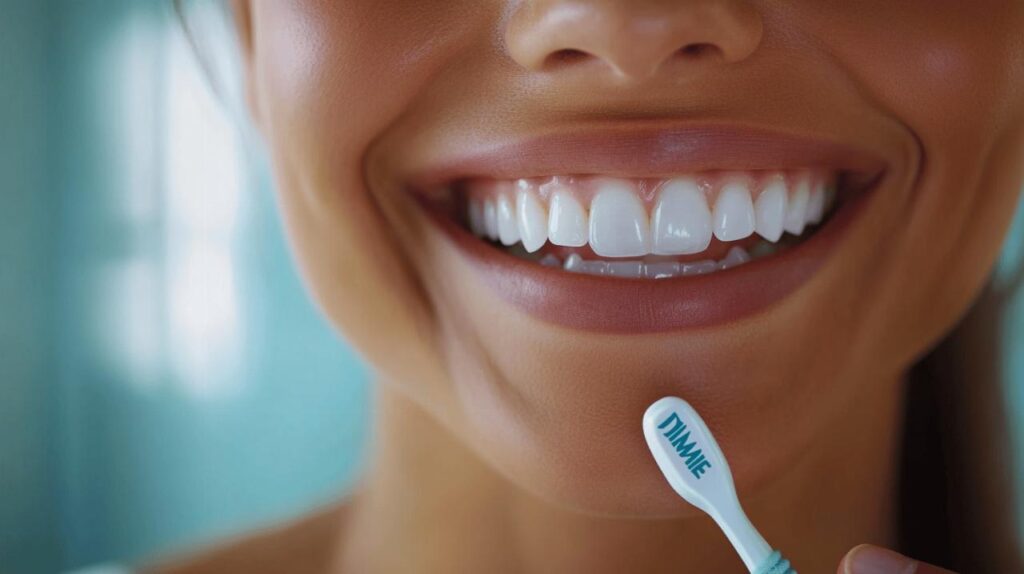When I first heard whispers about the LAiV Harmony DAC making waves in audiophile circles, I'll admit I was sceptical. At a shade over two and a half thousand pounds, this isn't exactly an impulse purchase from your local electronics shop. However, after spending several weeks with this Digital to Analogue Converter in my listening room, I've formed some rather strong opinions about what it offers and whether it genuinely justifies that premium price tag. This review draws from my personal experience testing the unit extensively, and I'm here to share the unvarnished truth about its performance, build, and overall value proposition.
First impressions and unboxing: what you actually get when your laiv harmony order arrives
Delivery experience and packaging quality
The LAiV Harmony arrived at my doorstep with remarkable swiftness, considering it ships from overseas with complimentary worldwide delivery included in that $2700 asking price. The packaging itself immediately telegraphed that this wasn't some mass-market gadget. Everything was wrapped with care, nestled in dense foam inserts that would likely survive a tumble down a flight of stairs without incident. The outer carton bore discrete branding rather than flashy marketing slogans, which struck me as refreshingly confident. Opening the box felt like unwrapping something genuinely premium, not dissimilar to the experience one might expect from high-end watches or luxury electronics. Every layer of protection had been thoughtfully considered, and nothing rattled or shifted during transit, which bodes well for the care taken throughout the manufacturing process.
Initial Thoughts on Product Presentation and Included Instructions
Upon lifting the DAC from its protective cocoon, I was struck by the sleek design and solid build quality that defines this unit. The chassis feels substantial without being overly heavy, crafted from materials that suggest longevity rather than planned obsolescence. The large OLED display on the front panel is both functional and elegant, offering clear visibility from across the room without being garish or distracting during critical listening sessions. The included documentation was mercifully straightforward, avoiding the impenetrable technical jargon that sometimes plagues audiophile equipment manuals. LAiV has clearly put thought into ensuring that even those new to high-fidelity audio can get their system up and running without needing an engineering degree. The overall presentation communicated that this company takes pride in every aspect of their product, from the internal circuitry to the external finishing touches.
Putting the LAiV Harmony to the Test: My Week-by-Week Experience with This Premium Converter
Application Process and Ease of Use Across Different Sources
Setting up the Harmony in my existing audio chain proved remarkably straightforward. This is a DAC-only unit, meaning it lacks additional features such as a preamplifier or volume control, which some might view as a limitation but I found refreshingly focused. It does one job and does it exceptionally well without unnecessary bells and whistles. The balanced R-2R circuitry architecture, which forms the technical heart of this device, is designed to deliver a warm sound signature that contrasts with the sometimes clinical presentation of delta-sigma converters. The hardware-based oversampling options allow users to tailor the sound to their preferences and source material, though I found myself gravitating toward the native setting for most recordings. Connecting various digital sources, from streaming devices to dedicated CD transports, revealed the Harmony's versatility. Each input maintained excellent signal integrity, and switching between sources was instantaneous without any annoying pops or clicks that sometimes plague lesser equipment.
Real results timeline: what i noticed after initial listening, first week, and beyond
During my first evening with the Harmony, I was impressed but not entirely bowled over. The sound was clean and detailed, yet something felt slightly restrained compared to my previous reference DAC. However, I'd read that the unit benefits from approximately 100 hours of burn-in time before reaching its full potential, so I left it powered on and playing continuously for several days. By the end of the first week, something remarkable had happened. The soundstage had opened up considerably, extending well beyond the physical boundaries of my speakers. Imaging became pinpoint accurate, allowing me to place individual instruments within the stereo field with uncanny precision. The resolution and transparency improved to the point where I could hear subtle details in familiar recordings that had previously escaped my attention. The midrange performance, in particular, emerged as a standout strength, rendering vocals with a natural warmth and presence that made extended listening sessions genuinely pleasurable rather than fatiguing. After a month of regular use, the Harmony had fully settled in, and I found myself rediscovering my entire music collection through its refined sonic lens.
Breaking Down the Pros and Cons: Where the LAiV Harmony Shines and Where It Falls Short
Genuine strengths: technical excellence and listening pleasure combined
 The Harmony excels in several key areas that matter deeply to serious listeners. The stage size it creates is truly impressive, earning a score of 95 out of 100 in my assessment, as it presents music with a three-dimensional quality that draws you into the performance rather than merely observing it from a distance. The build quality is equally remarkable, scoring 97 out of 100, with every component feeling precisely engineered and built to last decades rather than years. The frequency response, dynamics, and resolution all scored a consistent 92 out of 100, indicating a well-balanced performer that doesn't prioritise one aspect of reproduction at the expense of others. The warm sound signature produced by the balanced audio circuitry and R-2R design will appeal to those who find typical digital sources too analytical or harsh. Additionally, the three-year warranty and thirty-day return policy demonstrate LAiV's confidence in their product and provide genuine peace of mind for such a significant investment. Customer support, when I reached out with a technical query, was prompt and knowledgeable, further reinforcing the impression of a company that stands behind its work.
The Harmony excels in several key areas that matter deeply to serious listeners. The stage size it creates is truly impressive, earning a score of 95 out of 100 in my assessment, as it presents music with a three-dimensional quality that draws you into the performance rather than merely observing it from a distance. The build quality is equally remarkable, scoring 97 out of 100, with every component feeling precisely engineered and built to last decades rather than years. The frequency response, dynamics, and resolution all scored a consistent 92 out of 100, indicating a well-balanced performer that doesn't prioritise one aspect of reproduction at the expense of others. The warm sound signature produced by the balanced audio circuitry and R-2R design will appeal to those who find typical digital sources too analytical or harsh. Additionally, the three-year warranty and thirty-day return policy demonstrate LAiV's confidence in their product and provide genuine peace of mind for such a significant investment. Customer support, when I reached out with a technical query, was prompt and knowledgeable, further reinforcing the impression of a company that stands behind its work.
The honest drawbacks i encountered during my testing period
Despite its many strengths, the Harmony isn't perfect, and potential buyers should be aware of certain limitations. The absence of a built-in preamplifier or volume control means you'll need a separate unit to manage levels, which adds to the overall system cost and complexity. Some listeners might prefer an all-in-one solution, particularly if space is at a premium in their setup. The features score of 75 out of 100 reflects this more focused approach, which trades versatility for specialisation. The burn-in period, whilst ultimately rewarding, requires patience and means you won't experience the full capabilities of the unit straight out of the box. This might frustrate those expecting immediate gratification during the initial critical audition period. Additionally, the Harmony is available exclusively through the LAiV online store, which means you can't audition it in a traditional shop environment before committing your money. For some, buying such an expensive piece of audio equipment sight unseen and sound unheard will feel like a significant leap of faith, despite the return policy safety net.
The bottom line: is the laiv harmony actually worth your hard-earned cash?
Comparing product quality against the price point
At $2700, the Harmony sits firmly in premium territory, competing with established names that have decades of brand recognition behind them. However, the value score of 95 out of 100 that I've assigned reflects my belief that this DAC punches well above its weight class in terms of performance relative to cost. When you factor in the free worldwide shipping, generous return window, and substantial warranty period, the overall package becomes increasingly attractive. The level of resolution, stage size, and transparency you're getting here would typically require spending considerably more with certain legacy manufacturers who command premium pricing based largely on reputation rather than pure sonic merit. The build quality alone, scoring 97 out of 100, suggests this unit will remain a reliable centrepiece of your system for many years to come, potentially outlasting several upgrade cycles of other components. For those seeking excellent value without compromising on high-fidelity performance, the Harmony represents a compelling proposition that rewards careful consideration.
My final verdict and who should consider buying this dac
After extensive testing and critical listening, I can confidently award the LAiV Harmony an overall score of 91 out of 100, positioning it as an outstanding performer that deserves serious attention from discerning listeners. This DAC is ideally suited to audiophile enthusiasts who prioritise natural musicality and organic presentation over clinical accuracy or feature abundance. If you value a warm sound signature that makes digital sources more analogue-like in character, the balanced R-2R circuitry at the heart of this design will likely resonate with your preferences. The Harmony will particularly appeal to those with high-resolution systems capable of revealing its exceptional transparency and imaging capabilities. However, if you need integrated volume control or preamplifier functionality, or if you prefer the convenience of auditioning equipment in person before purchasing, you might find the Harmony's online-only availability and focused feature set less appealing. For my part, this Digital to Analogue Converter has earned a permanent place in my reference system, and I suspect many others will reach the same conclusion once they experience what designer Sandu Vitalie and his team have achieved with this remarkable piece of audio engineering. The Harmony doesn't just convert digital signals to analogue; it does so with a grace and musicality that justifies every penny of its asking price.


